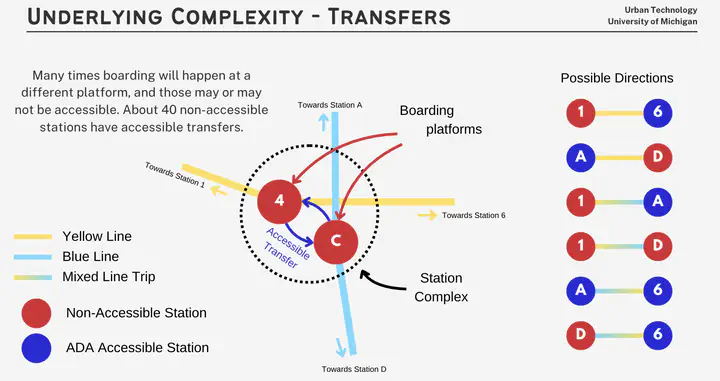Reconstructing New York City Subway System from the Perspective of ADA Accessibility
 An illustration of network complexity in the NYC MTA Network System from ADA perspsective.
An illustration of network complexity in the NYC MTA Network System from ADA perspsective.(In Progress)
This work is in development with Danielle Schulz.
Abstract
The accessibility of a system if far beyond the individual dots plotted on a line. It affects how connected each station is to each other and to the system itself. In the case of the New York City Subway, accessibility dictates how people navigate not only the stations but the city as a whole, including everything it has to offer. Having dedicated ADA data allows for deeper studies in how to make the city more accessible, and the creation of new data-oriented strategies that will benefit the population. Furthermore, the benefits of ADA infrastructure benefits many different demographics.
We asked three research questions:
How does the ADA-accessible subway network differ from the full subway network in terms of network structure, metrics and representation?
To what extent are trips relying solely on the ADA-accessible subway network less efficient compared to trips utilizing the full network? Specifically, what are the additional travel costs—such as time, distance, or transfers—incurred when navigating the MTA subway system using only ADA-accessible stations?
What targeted strategies could enhance the travel experience for ADA users with minimal intervention, such as identifying and prioritizing key stations for accessibility upgrades?